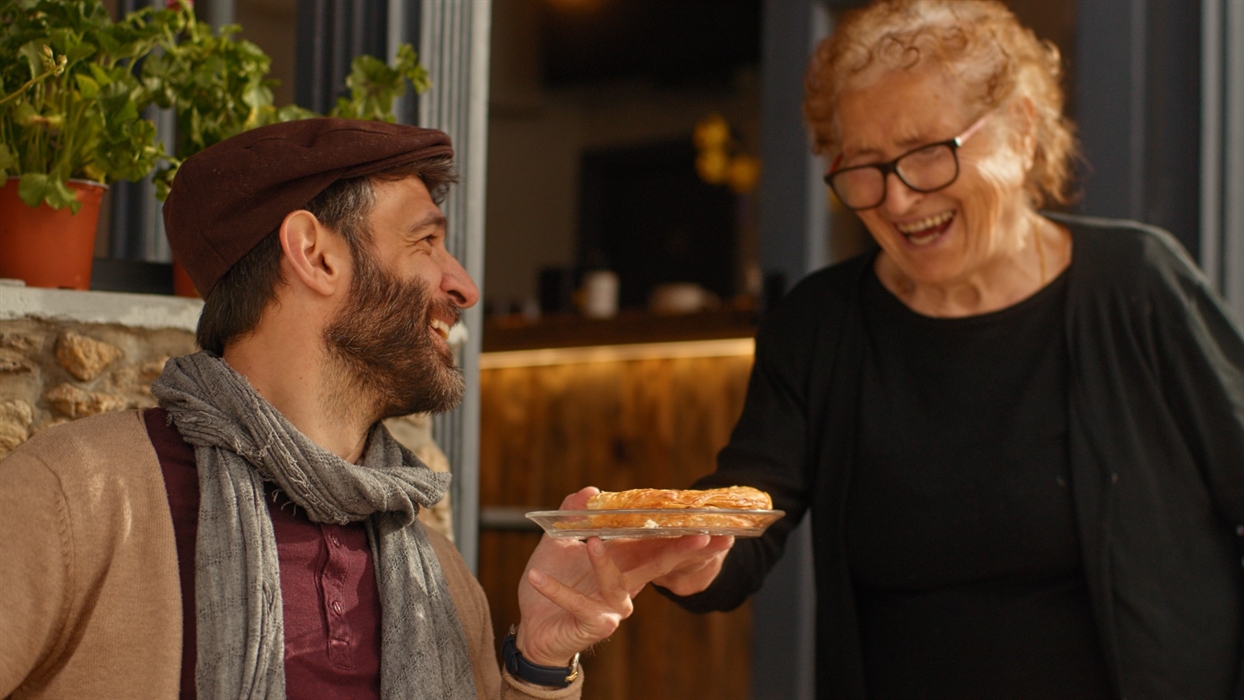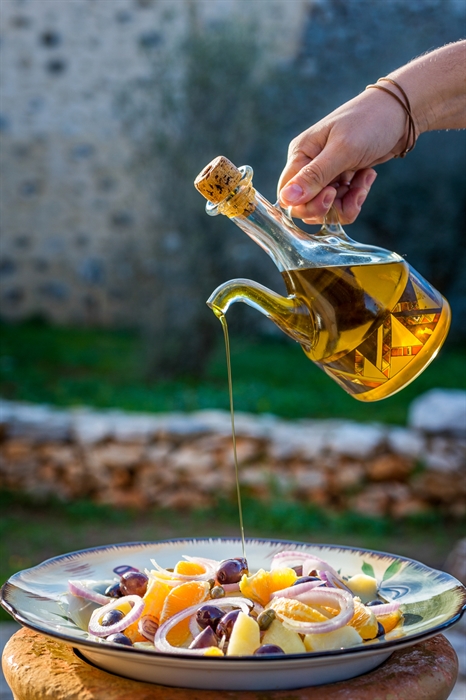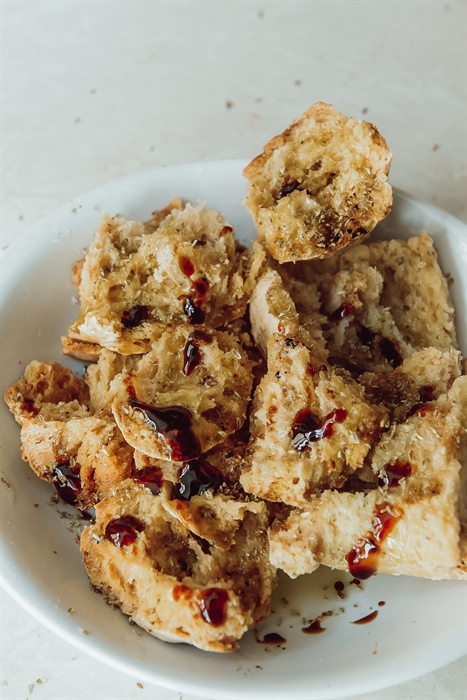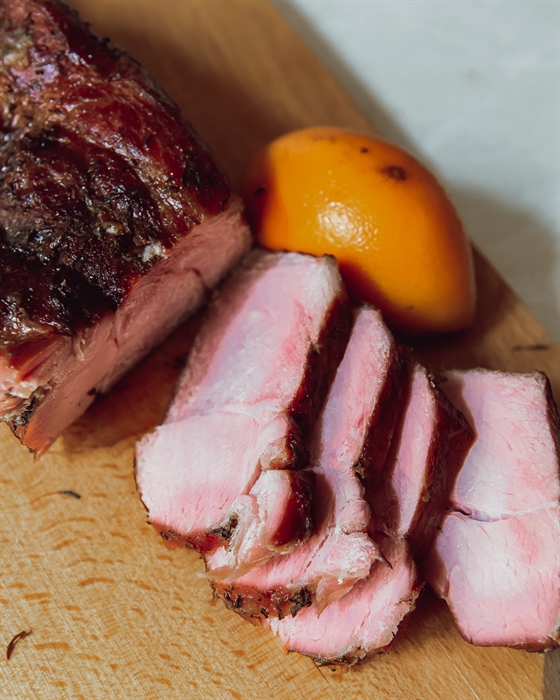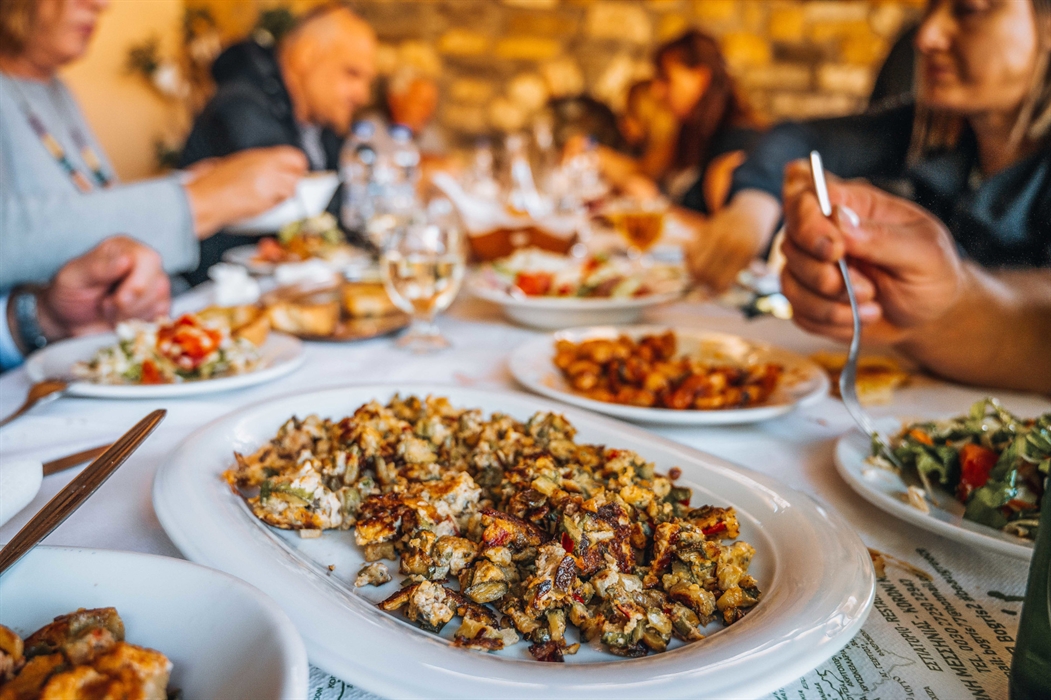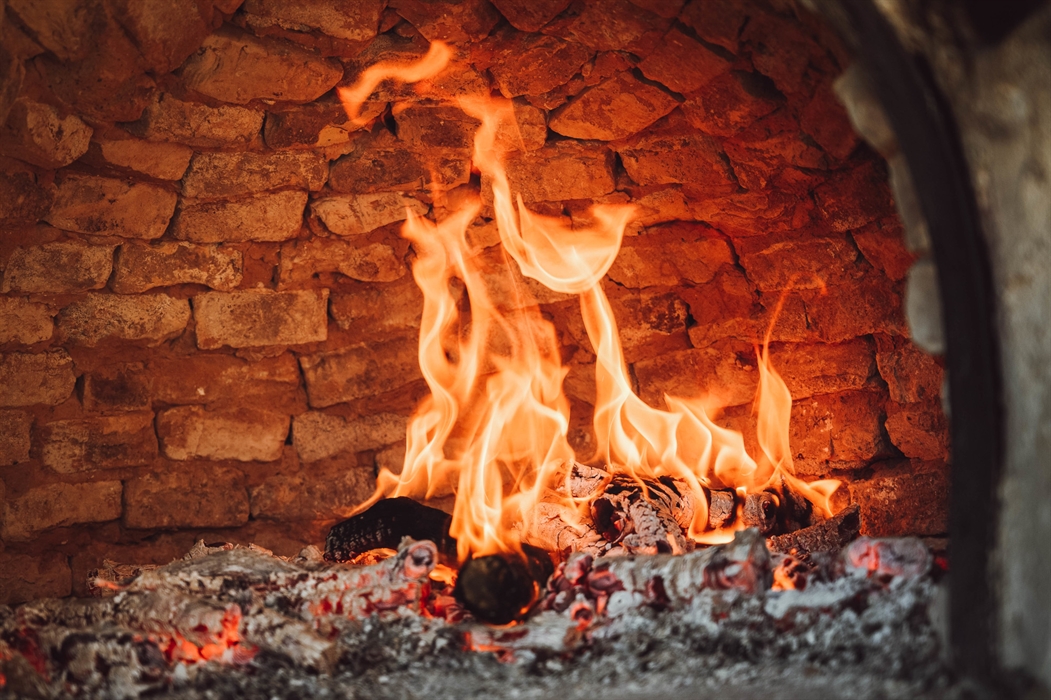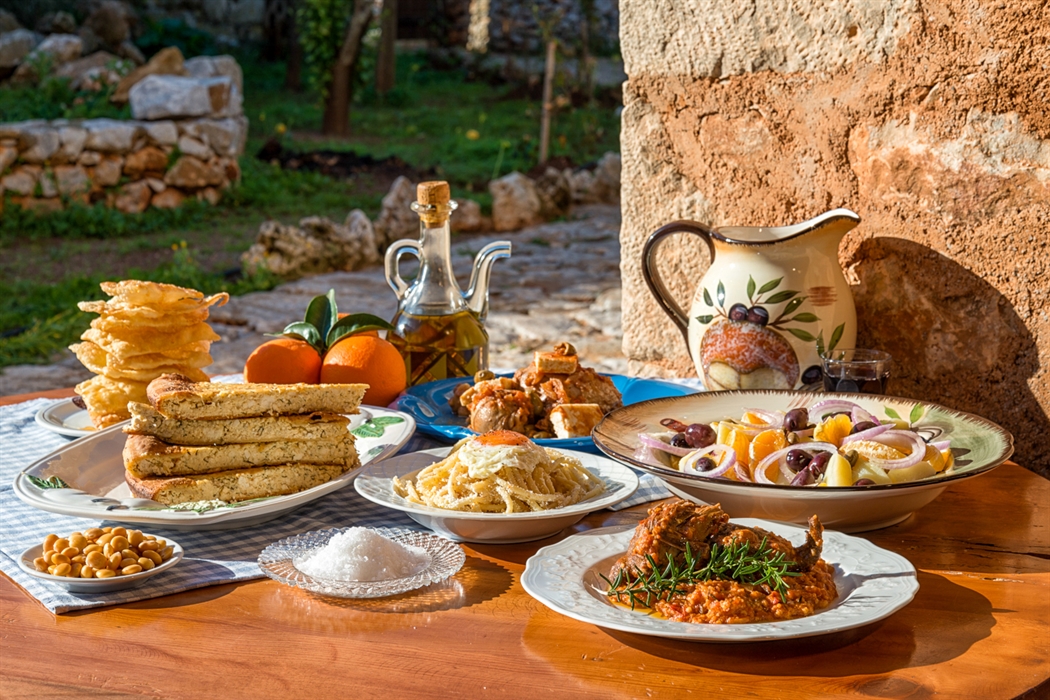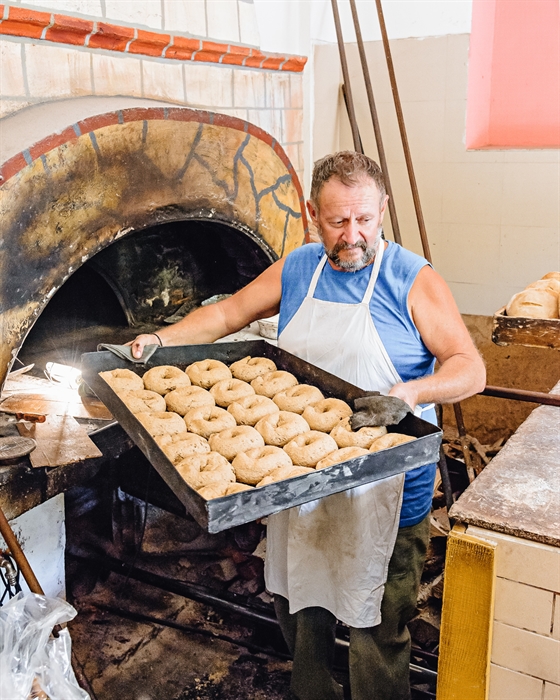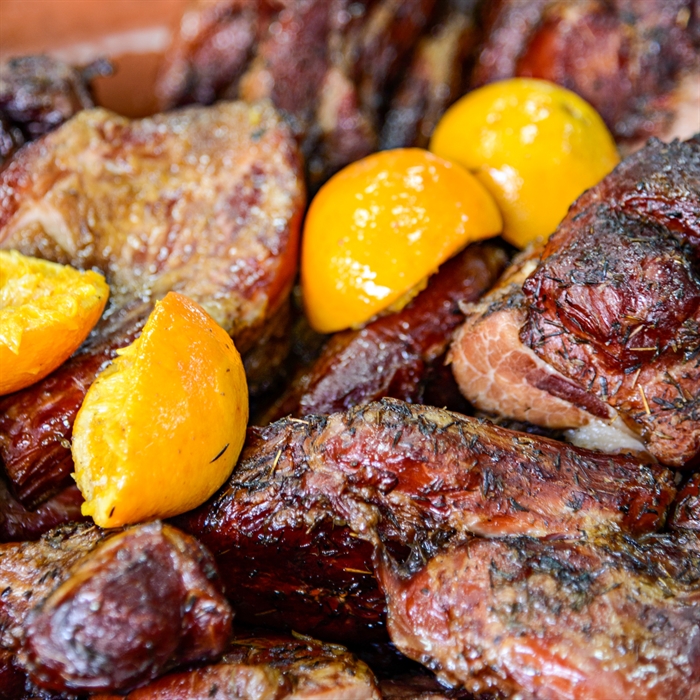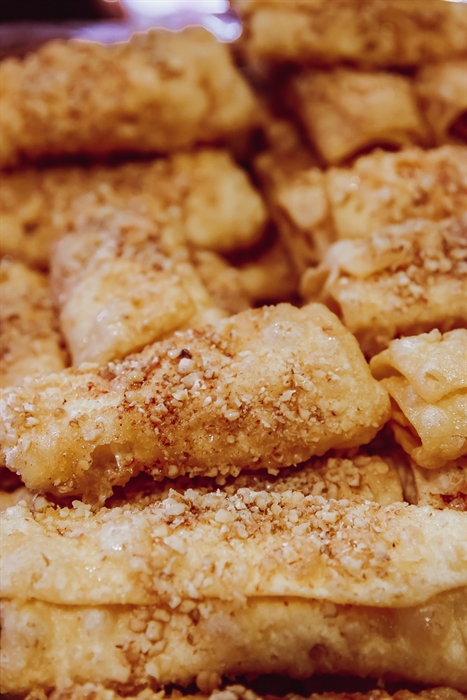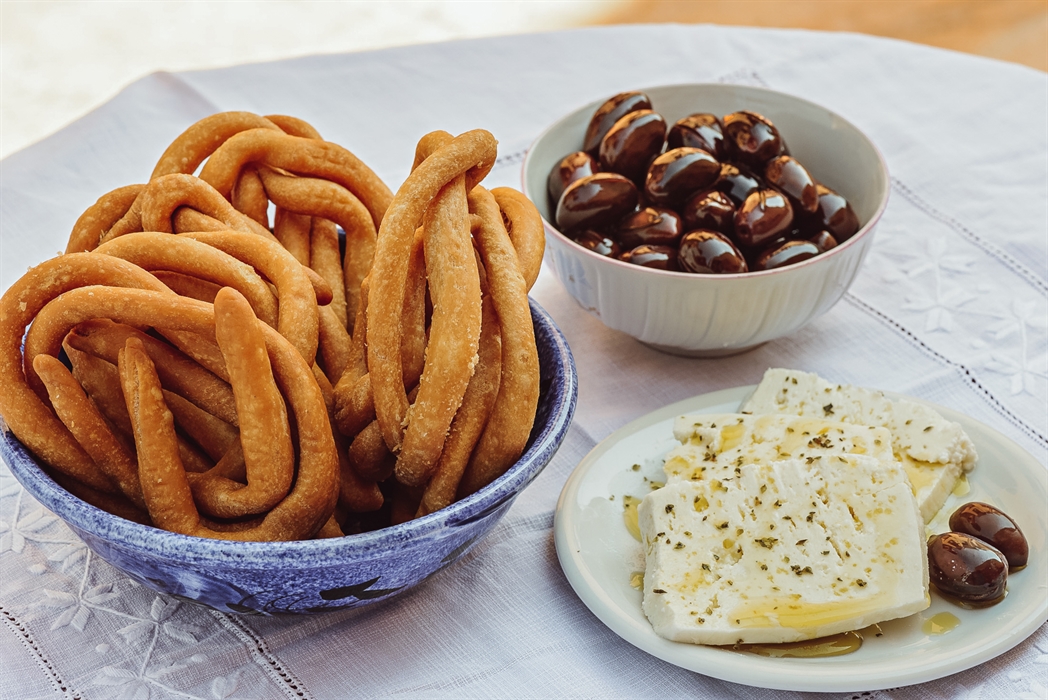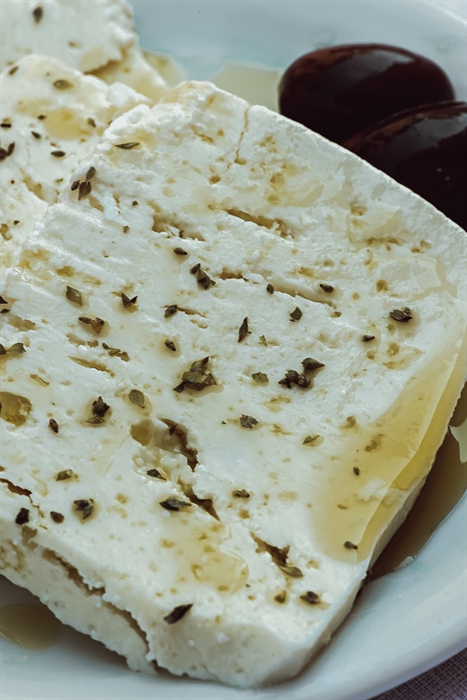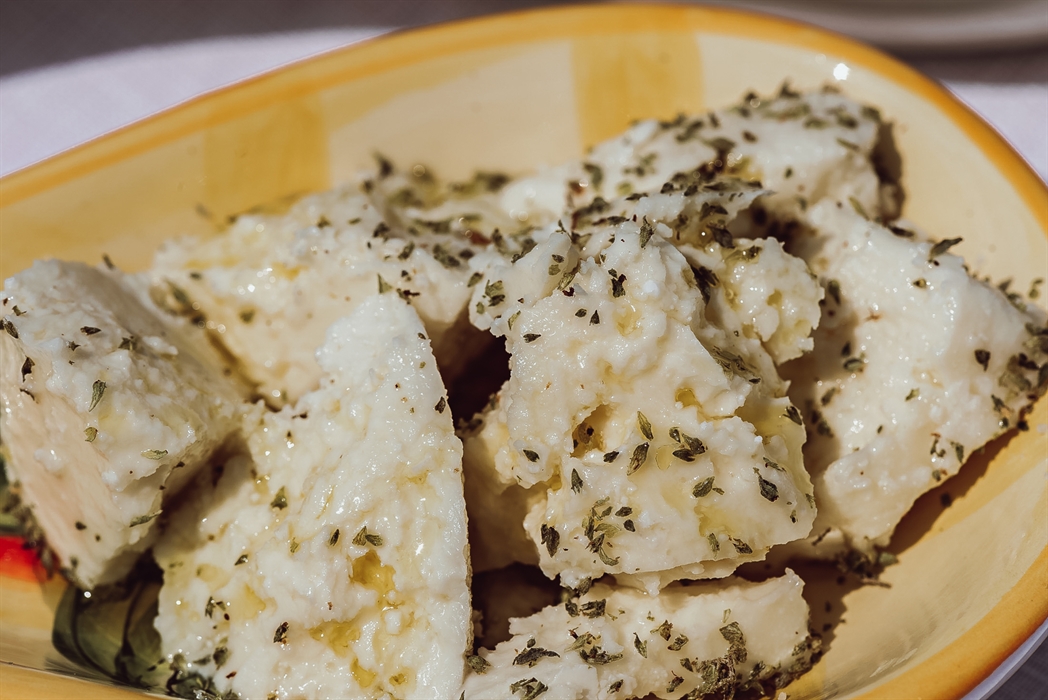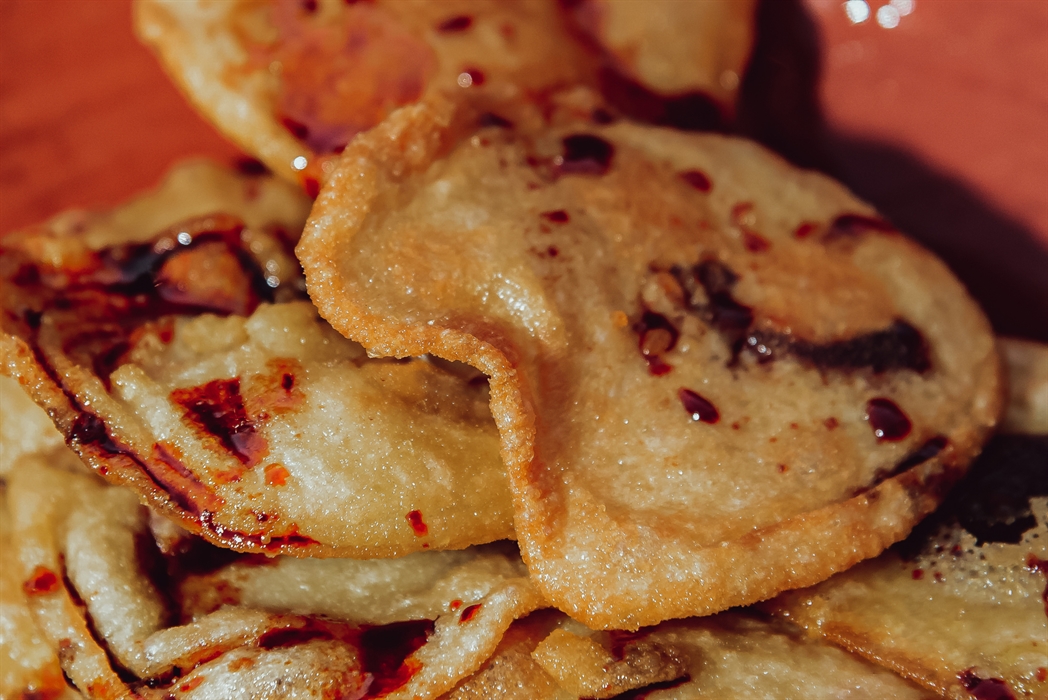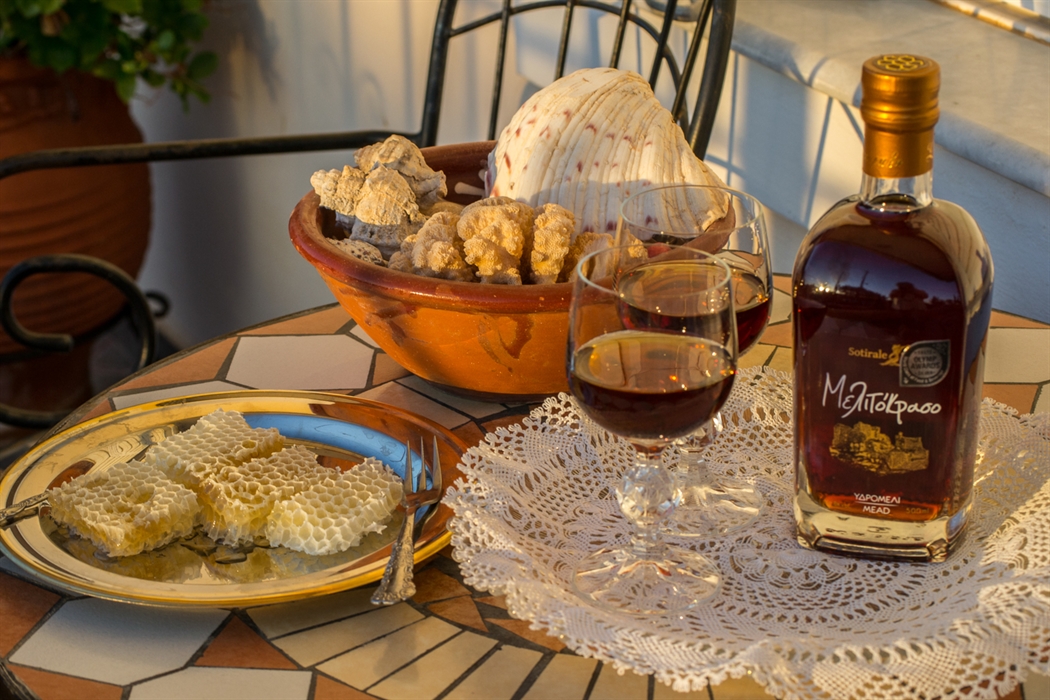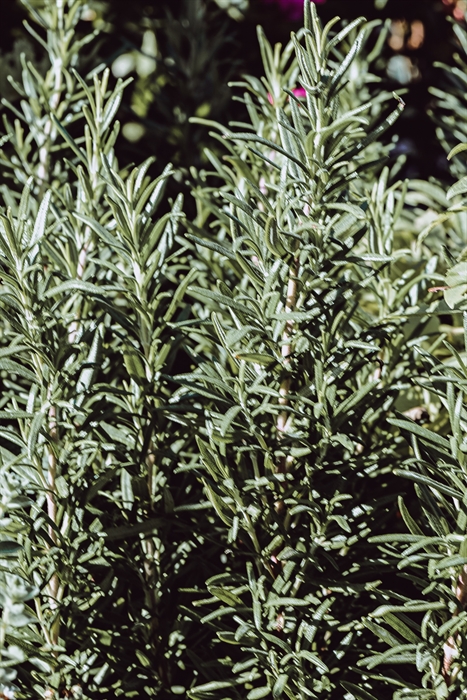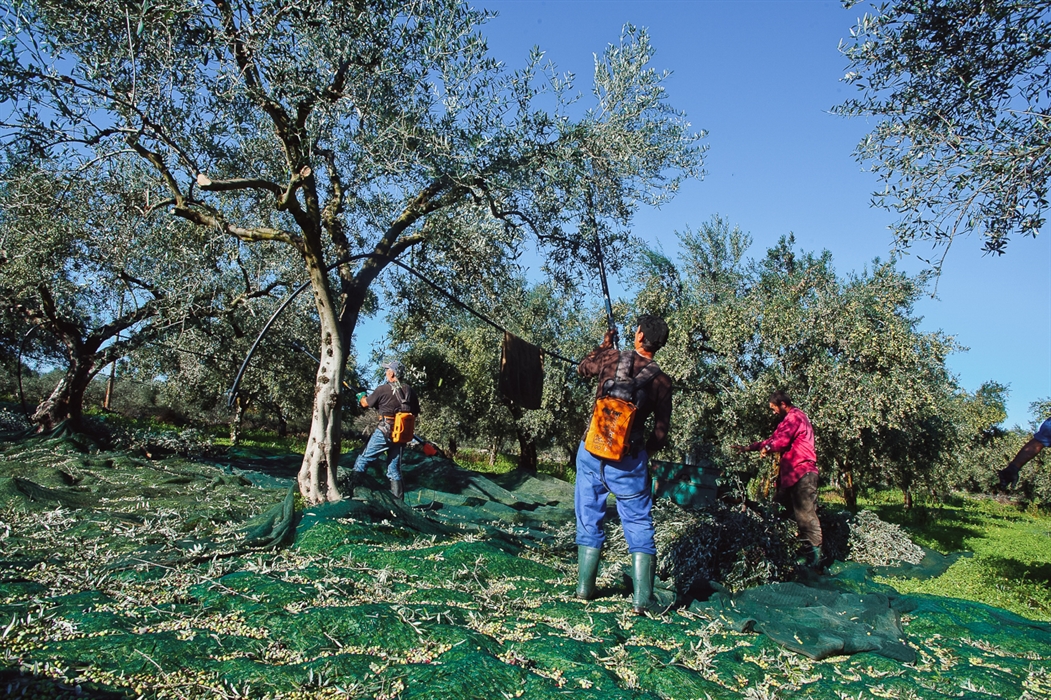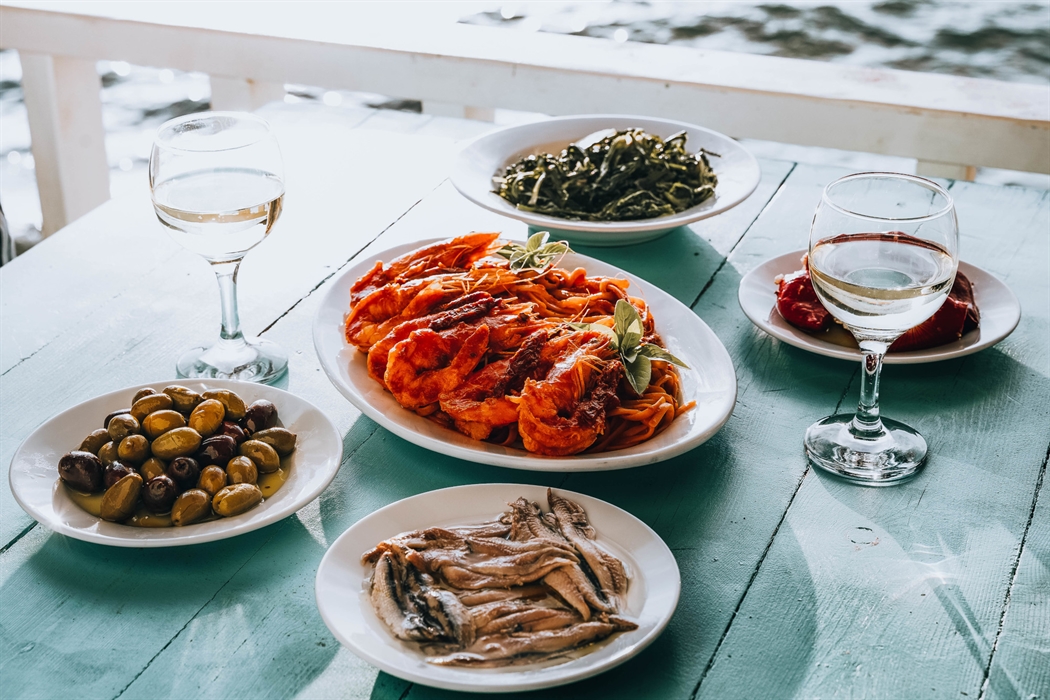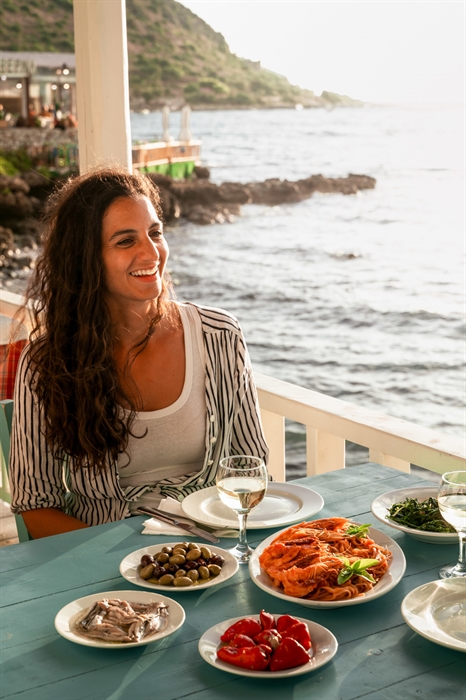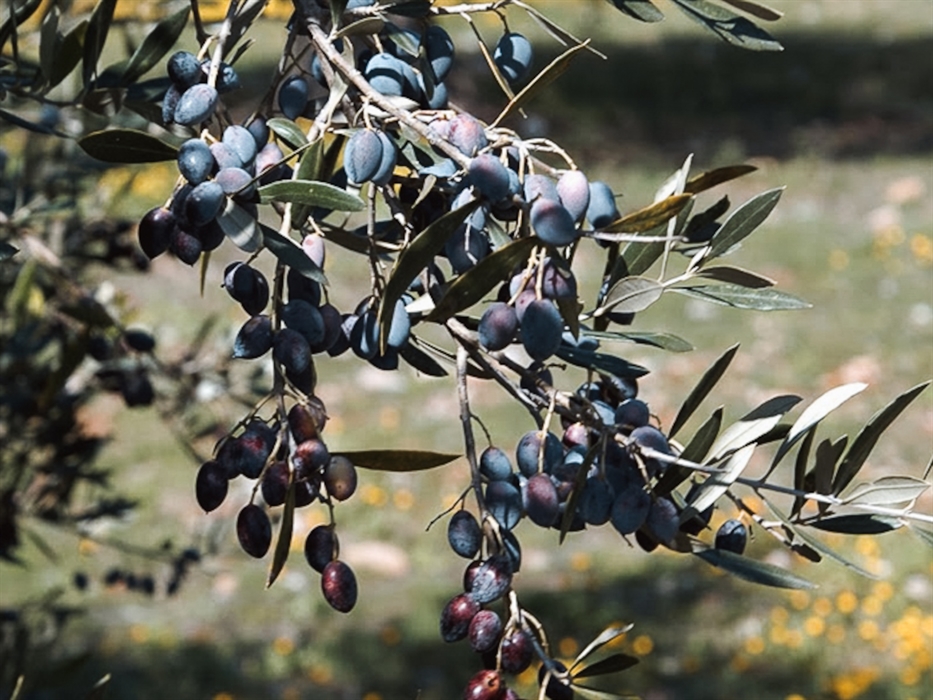Laconian Cuisine and local products
Mani is famous for its olive oil, olives and oranges - but it also produces dozens of other products such as sfela cheese (a P.O.P. product), syglino cured pork, orange sausages, herbs, wild greens and the famous lupin beans. Maniot cuisine is very inventive and full of rich flavours.
Mani is famous for its olive oil, olives and oranges - but it also produces dozens of other products such as sfela cheese (a P.O.P. product), syglino cured pork, orange sausages, herbs, wild greens and the famous lupin beans. Maniot cuisine is very inventive and full of rich flavours.
Olives and olive oil. The microclimate and soil of Laconia are suitable for many olive varieties and Laconia produces excellent olive oil. As in neighbouring Messina, the landscape is full of olive groves which have been cultivated since ancient times. Koroneiki, Athinolia and Koutsourelia varieties are those mainly used to produce olive oil. "Kalamata variety" olives and green crushed “tsakistes” olives are also produced here. Most of the olive oil is classified as "extra virgin" oil, which is considered the best category everywhere in the world.
Oranges. Due to the mild, temperate climate, more oranges than olives are grown in Laconia, and one of the largest orange groves in Greece (along with those in Argos and Arta) is located here. Oranges are used a lot in local cuisine - in salads, local sausages, pies, stews, sweets and pastries. They are also made into preserves and jam. Lemons, tangerines and grapefruits are produced here, and fresh packaged juice is associated with Laconia.
Herbs and vegetables. These are very important in Laconian cuisine, which is little wonder when you think of all the excellent ingredients available such as herbs from Mount Taygetos and Mount Parnon. Many people still use the traditional ways of preserving products -for example, in the villages on the slopes of Mount Parnon people dry wild herbs and tomatoes in the sun. In Laconian Mani they also use prickly pears -the delicious and nutritious fruit of a cactus plant that grows in the arid land around the area. People make them into a jam that is eaten on its own or used in sweets.
Lupin beans. This is a highly nutritious legume which has been grown here since ancient times. In the 19th century, the inhabitants of Mani mostly lived in poverty and were known as "lupin-eaters". There is a lot of work involved in making the beans edible, and the traditional ways are still followed today. In July when the beans are harvested, they are spread out on threshing floors until the bean separates from its skin. Then in August, they are boiled in huge pots by the sea and put in linen sacks that remain in the water for 8-10 days, until they lose their natural bitterness. Lupins were eaten during times of religious fasting. Today tender lupine tops are used in salads.
Sfela. This is a semi-hard white cheese, which is designated as a PDO (Protected Designation of Origin) product. You can find it in salads and pies, or just eat it on its own.
Honey. Laconia produces a wonderful selection of honey, including thyme, blossom and pine, sage, and orange honey, and honey with thyme and aromatic herbs from the slopes of Mount Taygetos and Mount Parnon.
Syglino & sausages with orange. Syglino is salted pork which is preserved in its fat. This method of preserving meat had its beginnings in distant times when people needed to preserve meat for a long time. Preparation: large pieces of pork loin are smoked over local herbs and then boiled in water with oranges before being placed in containers and covered with olive oil until they are ready to use. Syglino is eaten on its own, in omelettes, and with fried eggs and coarsely chopped potatoes. Local sausages are made with minced pork, wine, garlic, spices and orange peel which gives them a unique taste.
Pasta etc. You can find hand-made pasta and trachanas (fermented grains and milk) made with fresh milk and eggs in shops selling traditional products.
TRADITIONAL RECIPES
The famous lalaggia. These delicious homemade dough strips are made with flour and water, folded and fried in hot olive oil. Traditionally the were eaten with sfela cheese, olives, cured meats and sausages. You will find them in patisseries, and in tavernas.
“Tsouchti” pasta. This is a very simple dish, made with handmade thick spaghetti and crumbled dry mizithra cheese which is cooked in olive oil. It’s often served with a fried egg on top and was originally made during carnival – but it’s too good to only serve a few weeks out of the year!
“Travichtes” small Mani pies. The traditional pastry is made with very few ingredients - mainly flour and water - and these pies are fried in olive oil. They are eaten with honey or syrup poured over them. You will also find them made with olives.
Cheese pies, or open Mani cheese pies. These can have a wide variety of fillings, and they are all made with handmade pastry. The handmade sheets of pastry used in traditional cuisine were not thick (like other parts of Greece such as Macedonia, or Epirus). Instead, housewives would usually roll out a lot of thin sheets, so that they could then be layered in the pie. Fresh cheeses, milk and butter all play a big role in making these pies, as do olive oil and vegetables. Little pies fried in olive oil are also very popular. They are often made from the pastry dough left over from making bigger pies and are a quick snack.
Traditional teas with fennel and herbs are also drunk in Laconia.
Kozouni (or kozouna), is a very special Mani pie – it was also known as the "wedding pie".
Paspalas. This is a porridge made from wheat flour, oil and water that was made by housewives as it was an easy, cheap way to feed large families. It is served hot. It was cooked in various different ways to add flavour, so you’ll find onion paspalas, liver paspalas, pork paspalas and quail paspalas. Quails were everywhere in southern Mani and especially in Porto Kayo (which is also called the port of quails)! They were caught in large numbers and often sent alive to Europe. The locals kept some and pickled the meat so they could use it as needed.
Meat dishes. Bouzopoula (traditional pork loin with crispy skin, slow-cooked in the oven). Barduniotikos rooster (cooked in the pot with tomato, onions and hard cheese - served with pasta).
Other foods. Kayanas is scrambled eggs with tomato, cheese and either syglino pork or sausage. Courgette flowers cooked with onion, garlic, tomato and mint leaves are also popular, as is Tsigarolachana, which is wild greens fried with onion and passata.
Trout & Salmon. Very high quality trout and salmon are produced in the waters of Northern Taygetos. You can enjoy them smoked, marinated or cooked following traditional recipes.
SWEETS
Diples. These traditional sweets symbolise joy and abundance, and were a treat at celebrations, weddings and births. They are made with a light dough (flour and egg), honey, cinnamon, lemon juice, and coarsely grated walnuts.
Milk pies. Well-known sweets from the old days made with a cream with eggs, flour, milk and a little butter which is put in an oiled baking tray without pastry. After baking, it is sprinkled with icing sugar.
Amygdalota almond cookies from Monemvasia. Some of the most famous in Greece.
Laconia sesame bars. A healthy, highly nutritious and delicious snack that has its roots in antiquity. Made with honey and sesame seeds. (As sources we have used, among others, the greekgastronomyguide and the publication of the Municipality 'Sparta, beyond the myth').
Read about the vineyard and wines of Laconia, as well as the famous Malvasia wine.
Location
Find the destination on the interactive map below.
Weather
Σχετικό περιεχόμενο χρηστών (UGC)
Ενημερωθείτε για ενδιαφέροντα θέματα γύρω από τον προορισμό μέσα από το περιεχόμενο των χρηστών μας
Discover 7 hidden gems of the Peloponnese
Many of you may have already visited some of the most renowned attractions…
TOP 10 archaeological museums in the Peloponnese
Olympia, Mycenae, Epidaurus, Diros Cave, Ancient Corinth, Messene and…
TOP 10 Castles in the Peloponnese
Castles galore! Mystras, Monemvasia, Palamidi, Methoni, Koroni,…
Newsletters
- About us
- FAQ's
- Map
- Tourism information centers
- Disclaimer
- Sitemap
- Our brand
- Media roum
- Adding your bussiness
- Corporate
- MICE

Peloponnese. Greece beyond the obvious





Design and creation from Cosmote
Marinas and Moorings
Diving centers
Get inspired
- Media gallery
- Blog
- The Peloponnese in the media
- Your feedback
- Users' general content
- Users' local products
- Users' events content
- Ask a local
More
- Accommodation
- Travel agencies
- Restaurants
- Services
- Destinations Map
- Weather
- Public transport
- Events
- Frequently asked questions
- Useful phones
- B2B
- Destination Data
- Contact

